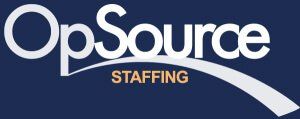Job-seekers and Employers, if you would like to discuss how OpSource Staffing Inc. can help you call us at (866) 870-8133 or Contact Us.
Looking for a job is exhausting – physically, mentally and emotionally – which can cause you to experience burnout. Physically, a job search
takes time, hours per week on a regular basis for months. Mentally, you need to stay on top of the industries and companies you are targeting, the people you have met and where you are in the process for various jobs. Emotionally, there will be ups and downs as some applications turn into interviews, but some go nowhere. Anticipate that your energy will wane during your job search, and plan in advance how you will get re-energized and re-motivated. Heading off signs of burnout ensures that you continue your job search
efforts at a regular cadence, rather than start and stop. Regular and ongoing action will best help you land a new role.
Here are five ways to avoid burnout during your job search:
1 – Schedule regular breaks as part of your job search
routine
You might want to research every company on your target list at once to get it over with, but if you don’t take a break, you are more likely to gloss over important details. If you plow through all your networking calls at once, you may sound robotic and therefore disingenuous. If you fill your day with back-to-back activity, you leave no space for an inspired idea to come to you – such as remembering a former colleague you can reach out to or recognizing that something you learned could be of interest to one of your target companies.
Whether you input specific breaks into your calendar or set an alarm to ring every one to two hours, actually schedule your breaks. In addition, make plans for your breaks so you are excited to take them, and you pick activities that refresh you. A walk, a special coffee, or one episode of your favorite sitcom are short ways to refresh. Also plan for a longer break every few days – go out in nature, or see a friend (you can have a virtual lunch if you’re sheltering in place).
2 – Tame your negative self-talk
Sometimes it’s not too much work, but not starting at all that you need to overcome. Many job seekers
put off reaching out to their network or applying for jobs
because the negative voice in their head tells them they’re not ready to start or not worthy of being hired. You’ll need to tame your negative self-talk before it talks you out of your job search.
Naming the voice is one way of taming the voice. When you name the voice, you put it outside of yourself. You can notice it and choose to let it go. You can even pick a funny name for your negative voice (like Newman, if you’re a Seinfeld fan) to give it less power. If you have a positive voice that comes up, name that one too, and call for it when Newman shows up.
3 – Keep a running list of wins
The emotional ups and downs of a job search
can drain your confidence if you’re not careful. Keep a running list of wins – not just job search-related but in all areas of your life. Note even small positive moments of serendipity, like picking the fastest-moving line at the grocery. When you fall into a bad mood, refer to your list of wins for a pick-me-up.
Having a ready list of wins is a great tool for getting your mindset ready before an interview or networking meeting. Knowing your job search-related wins also gives you something positive to say when people inevitably ask you how your search is going. You can respond with a laundry list of what you have accomplished, and then people will know you’re on top of things and won’t give you unsolicited advice!
4 – Surround yourself with success stories
In addition to your own wins, you can lean on the wins of others. Look for articles of successful people in the industries and roles you’re interested in. Look for articles about people getting hired – regardless of industry or role. Seeing that other people have accomplished what you want to accomplish makes it appear more doable.
The professional association related to your industry or functional area may publish profiles of successful members. Or you can find profiles in business publications, such as Forbes, Fast Company, Inc, etc.
5 – Have a cheerleader to call
Everyone should have a cheerleader in their network (if you don’t, build your network to include this and other key supporters). A cheerleader is the friend who is always your champion. They may not have advice or ideas or feedback for you, but they always have encouraging words of support. Cheerleaders are optimistic and enthusiastic, so you can count on them for an infusion of energy.
Don’t have a regular pity party – you don’t want to drive your cheerleader away. But sometimes you may need to vent, or at least say candidly how you feel, and a cheerleader is someone who won’t be brought down by your negativity. In fact, their enthusiasm is often contagious and just speaking to them can help you bounce back, whether you talk about your job search
specifically or not.
The job search
is a marathon and
a sprint
You want to have a cheerleader, success stories and the other three tactics available to you to keep you going in your job search
so you don’t burnout. The day-in, day-out nature of a job search
is much like a marathon, where you need to be prepared for a long journey.
That said, the most productive job search
has a sense of urgency and speed – you want to be the first to apply, or ideally hear about jobs
before they are broadly posted. In this way, the job search
is also a sprint, and you can use these tactics as energy boosts to propel your search forward while avoiding burnout.
Article Provided By: Forbes
Related Posts

Advantages: 1. Strategically balance labor needs and production levels by bringing in workers when they need them and then letting them go when they do not. 2. Convert a historically fixed labor cost to a variable one while shifting liabilities for unemployment, EEOC matters, benefits, and worker's compensation to a third party. 3. Use of contracted suppliers to manage low-skilled tasks leads to better outcomes at a lower cost. 4. Purchasing and finance departments save money on what companies pay for the hourly bill rate. Disadvantages: 1. Large disparity in pay between full-time regular employees and temps gives rise to a wide gap in the quality and dedication levels between the two types of workers. 2. Temporary workers display lower morale, higher absenteeism, greater turnover, less efficiency, and poorer work quality as compared to their full-time counterparts. 3. Decreased business efficiency as more labor hours are required to get the same amount of work done, largely due to exorbitant turnover and absenteeism, as well as constant restraining.

As of May 2020, the Bureau of Labor Statistics reported the current U.S. unemployment rate as 13.3%. While slightly down from April, unemployment is the highest it’s been since the 1930s. For many working Americans, this is the first— and hopefully last — time that we have seen anything like this. With millions of Americans now looking for work, employers need to rapidly adjust their workplace policies to remain competitive with top candidates. How Workplaces Have Changed In just a few months, the face of the American workplace has changed dramatically. March saw employees divided into groups labeled “essential” and “nonessential,” while stay-at-home orders forced teams to adapt to remote work. While some are returning to offices, job sites and other places of work, many employers are planning to permanently close some, if not all, physical locations. On May 12, Twitter made headlines as CEO Jack Dorsey announced that employees could work from home forever. This is just one of many companies reframing its view of the modern workplace. For those of us who have returned to our offices, we are met with sanitation stations, increased distance between desks, masks and other public health safety measures. Meetings are either stand-up only, with people practicing social distancing, or held virtually. What’s On The Horizon Some companies struggling with precisely how to adapt their current environment to new social distancing standards are considering adding staggered shifts to maximize space usage. In this scenario, multiple employees could share a single workspace but on alternating days, with a strict cleaning regiment in between. Along with creating a healthier environment (fewer people in close quarters), flexible schedules can allow for a reduction in office square footage. Businesses nearing the end of their lease can use this as an opportunity to downscale their office footprint and add to the bottom line. Many office space designers are considering how the change will impact future plans. For years, open office environments have been the trend. Cubicles have been replaced with standing desks, portable partitions and lots of room to roam. While closed offices and cubicles likely won’t return, it’s possible office buildings could transform from daily use facilities to places where meetings and conferences take place. National organizations may also begin opening regional hubs to provide coworking spaces for remote employees to use sporadically instead of congregating regularly in one central location. How Employers Need To Approach Hiring 1. Advertising And Follow-Through Once your team has reviewed which positions will be mission-critical for the remainder of 2020, actively advertise these jobs . A small investment combined with regular candidate follow-through will help eliminate concerns some job seekers have about the longevity of a new position. The first few emails and calls to a candidate help to set the stage for the relationship and establish your company’s culture in their mind. 2. Be Mindful Of Social Media How your organization is responding to the pandemic says a lot about your company’s culture and leadership. Candidates interested in working for your business are often actively following your posts, and their decision to join may be swayed by this content. Work with your social media manager to ensure posts come from a position of strength and positivity. 3. ‘What Have You Been Doing During This Time?’ While it may seem like an unusual question for an interview, the answer can tell volumes about the candidate’s work ethic and how serious they are about advancing their career . Many candidates are using this time to expand their knowledge and boost their skills. As you begin accepting résumés, keep an eye out for any new certifications awarded in 2020. Applicants who have invested in themselves may be a better long-term fit. 4. Establishing A Work-From-Anywhere Policy What once was a perk, the work-from-anywhere (WFA) concept may soon become the standard, and job seekers might consider it a necessity. Businesses that have put solid technology in place with clear WFA policies will likely be in a better position to attract top talent. Fairly soon, competition for candidates will become fierce. A recent Gallup survey found that 54% of office-based professionals would leave their job for one that offered flexible schedules and remote work opportunities. If you haven’t already made WFA part of your long-term business plans, you should consider doing so. 5. A Clear Public Health Plan A question bound to come up during an interview is how your company is helping to keep employees safe. While much of this article has focused on office-based professions, many of Ameri-Force’s employees work in the skilled trades, primarily in our nation’s shipyards. Most of the worksites have implemented rigorous health protocols, including daily temperature checks of all employees, frequent sanitation stations throughout the worksite, staggered shifts to increase social distancing and daily deep cleaning of surfaces. Make sure you’re relaying the steps you’re taking to candidates applying for job openings. 6. Act Quickly With millions of highly skilled Americans actively seeking work, now is the time to attract and retain the best talent. However, don’t wait too long to begin the hiring process. As states have begun to reopen, jobs are being added, and people are getting back to work. If you wait too long to hire, you may miss out on promising candidates who could have made a significant impact on your company. If you’re considering bringing on additional staff, now is the time. Article Provided By: Forbes

The coronavirus pandemic has forced great change on professionals and organizations. Companies are evaluating how they get work done and the resources they need to do it. Professionals also are evaluating how they work best and whether they are satisfied with their work. There are questions, concerns and unknowns. Uncertainty can create stress, but stress and uncertainty are a normal part of one’s career . Successful people know how to continue to advance in their career amidst uncertainty. Here are five ways successful people manage the unknown and continue to progress: 1. Talk about your concerns with trusted resources. If you have concerns about your role and where your career is headed, consider speaking to trusted colleagues or friends. Talking out loud can help you think through the issues you are facing and invite another person to help you. Be careful not to complain. Try to focus on the facts at issue and be forward thinking. While you may not know the solution to your situation at the moment, you know there can be a solution. People are more willing to help someone who is hopeful rather than a complainer. 2. Write down a few career plans or options, but embrace flexibility. There will be things outside of your control that will impact your career trajectory. Try not to focus on what is out of your control but rather what is in your control, which is how you respond to uncertainty. Think about alternate career paths you may want to take. Write down the steps you need to take to get a promotion, move laterally within your organization, secure a role at another company, move to a different industry or go back to school. Seeing the steps on paper can help transform an abstract idea into a concrete path that you can start following. Have a few plans in mind because none of the ones you foresee may pan out. That is okay. Plans are not set in stone. Plans exist to motivate you to start moving forward and get closer to your goal. If the plan you write down is no longer realistic, update it. Edit it. Change it. 3. Continue networking, and engage in social media. The benefits of networking take time. It is unrealistic and unwise to think that you can get a golden ticket to your dreams out of one conversation with a person. Networking is not transactional. Networking is relationship-based, and relationships take time. Use this time of uncertainty to create and cultivate professional relationships that may help you down the road. Talk with specific individuals. Also, use social media to connect with other professionals. Not all networking has to be done one-on-one. Not all networking has to be done privately. You can start digital conversations by commenting on a colleague’s post, for example. Networking on social media engages everyone who has been attracted to the post. 4. Write and publish to showcase your expertise and skills. Sharing your thoughts publicly through writing is a great way to display your expertise and skills. This will invite people to engage with you and, in turn, opportunities may come your way. An easy way to start writing and publicly sharing your thoughts is to publish on LinkedIn. 5. Keep your resume up-to-date so you are always ready for an opportunity. The unknowns of your career also include unknown opportunities that may present themselves to you. Make sure your resume is current so that you are ready to share it and be considered for opportunities that may surprise you. When you are prepared, you will better be able to seize unseen opportunities. Uncertainty is part of a normal career progression. Be prepared for it. Accept it. Try to embrace it so you feel more comfortable where you are in your journey. Share your concerns with others, think of some career options, be flexible, continue networking, write and keep your resume current. Article Provided By: Forbes





